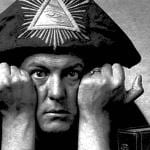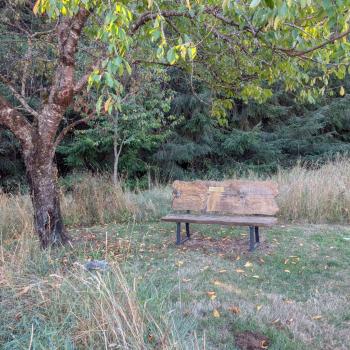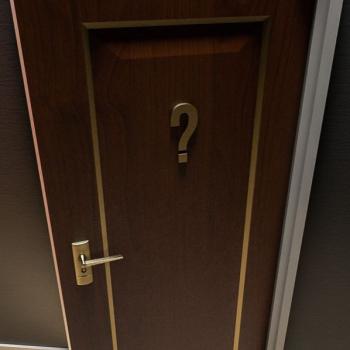People entering the magical communities can choose from many paths. Some check out both Thelema and Witchcraft before deciding which path to follow. As an initiated Witch and Thelemite I walk in both worlds. This series will clear up rumors, point out connections, and analyze similarities and differences – take down walls and build bridges!
Many Witches are unaware how deeply involved Gerald Gardner was with Ordo Templi Orientis. How Gardner came to think of himself of head of the O.T.O. in Europe, however briefly, shines a light on Gardner’s wide contacts in the esoteric communities, the last days of Aleister Crowley’s life, and the chaos caused by the Second World War.
O.T.O. initiate Richard Kaczynski minutely surveys Crowley’s life in Perdurabo, while initiated Gardnerian Phillip Heselton traces Gerald Gardner’s life in Gerald Gardner and the Cauldron of Inspiration.
Seventy years after the end of World War II we have forgotten how violently it disrupted life in Europe and England. Nazis imprisoned and killed not only Jews but many other targeted groups, including O.T.O. members. Karl Germer, second in command of the Order, was sent to a Nazi concentration camp precisely because of his O.T.O. leadership. By the end of the war the only functioning O.T.O. group was Agape Lodge in southern California, well away from the front lines.
Crowley lived through the bombing of London but was ultimately forced out of the city. Eventually he settled in a haunted Victorian guest house called Netherwood in the medieval port town of Hastings. He knew his health was fading and keenly felt the obligation to assure continuity of leadership of O.T.O. He was greatly relieved to learn that Germer survived the war. However, worried about Germer’s age and health, Crowley cast about for additional leaders to succeed Germer after his death.
Among the visitors to Netherwood was Grady McMurtry, an American ordnance officer stationed in England, as well as a first degree initiate from Agape Lodge. McMurtry became Crowley’s student. Eventually Crowley appointed him representative of O.T.O. in America and issued him emergency authorization to take charge of the Order should it ever be necessary.
Gardner meets Crowley
Gerald Gardner also met Crowley at Hastings. The two Masons apparently hit it off. Crowley affiliated Gardner into the O.T.O. based on his Masonic membership. Heselton pieced together interviews with people who knew Gardner and Crowley to contextualize what appears to have happened. The O.T.O. in England had dwindled to just a few people, and Crowley was in ill health, so it wasn’t possible to mount an elaborate initiation as we do today. Crowley and another O.T.O. initiate probably performed the Minerval initiation, and then Crowley “read through” Gardner to the subsequent grades. Gardner did pay the going rate for the VII, and Heselton and Kaczynski both settle on VII as his likely degree.
Charter to form an O.T.O. camp
In 1947 there were O.T.O. initiates in the U.K. but there was no functioning body. Crowley wrote to a contact that a new camp was forming and London candidates for initiation should be referred to Gardner. It is clear that Crowley had issued Gardner a charter to initiate and to form an encampment. A charter does exist and is currently in the possession of Allen Greenfield.
The charter however does not appear to have been written by Crowley – it is not in his handwriting and the language is not correct. Heselton concludes that Crowley probably scribbled something and Gardner prepared a more official looking document himself. Is the signature on the document Crowley’s? He might have signed it, or Gardner could have copied the signature from the original.
Who gets the papers?
Gardner traveled to America that winter and was still there when Crowley died on December 1, 1947. What was Gardner’s standing after Crowley’s death? Lady Frieda Harris wrote to Karl Germer in January calling Gardner the head of the Order in Europe. A few weeks after Crowley died, Gardner wrote to the owner of Netherwood, Vernon Symonds, identifying himself as the head of the O.T.O. in Europe and asking for any papers Crowley had left. Heselton believes that Gardner was interested in preserving Crowley’s papers and making sure they did not fall into the wrong hands.
In the event Karl Germer succeeded Crowley as Outer Head of the Order and did receive most of the materials from his estate. Grady McMurtry represented O.T.O. in America, and Gerald Gardner was sorted out as head of the O.T.O. in the U.K.
Gardner chooses Witchcraft
Gardner returned to England in March 1948. On his return he did not continue the work of setting up an O.T.O. camp. Crowley had referred candidates for initiation to Gardner, but Gardner wrote later that these candidates had been sent away by the army or lived at some distance so he was unable to bring them into the Order. At that point he was 63 and cited ill health among the reasons he did not pursue setting up the camp. Heselton notes:
He was far from being a bright young spark ready to take over and revitalize a moribund O.T.O. but an ailing and aging asthmatic who was set in his ways and, when it came to it, unwilling and unable to give the level of commitment that such a post demanded.
Instead, Gardner focused his energies on promoting, preserving, and publishing information about Witchcraft. We know him today as the person who brought Witchcraft out into the open, inspiring a religious revival that has grown into a worldwide movement.
Gerald Gardner himself explored Thelema but chose Witchcraft as his life’s work. His involvement demonstrates as clearly as anything can that these are compatible paths.
















